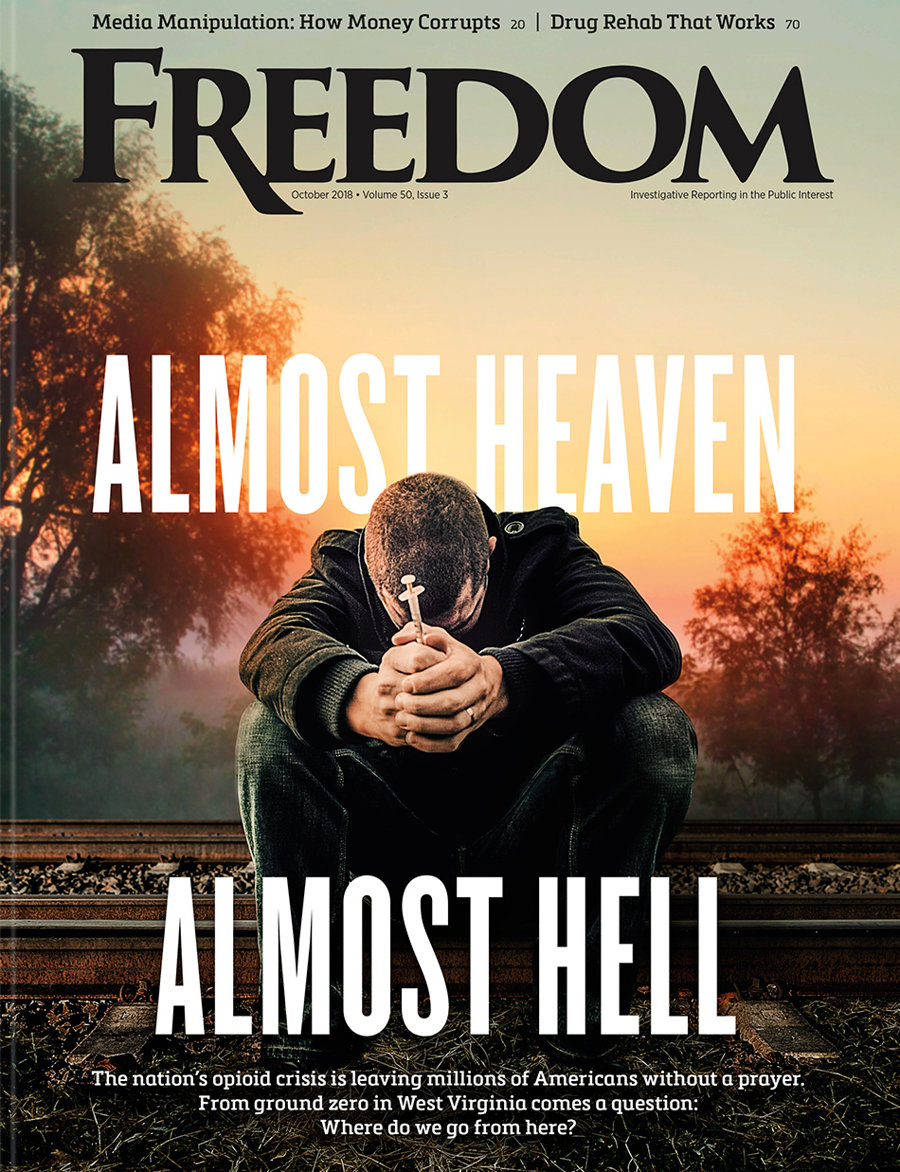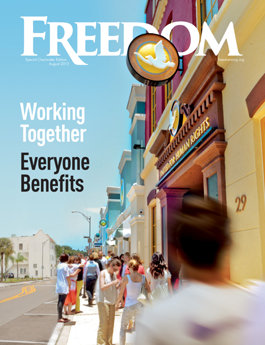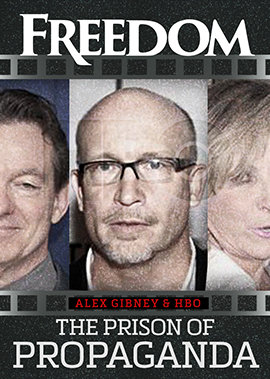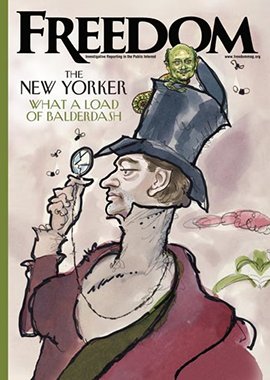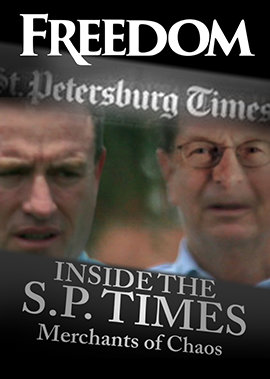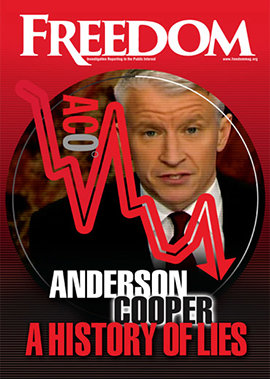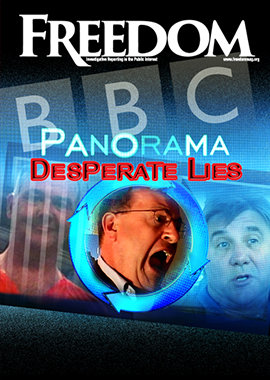The latest instance of blatant and biased misinformation bordering on fake news is an October 2 article by Associated Press focused on local opposition to a temple The Church of Jesus Christ of Latter-day Saints plans to build in Las Vegas.
Authored by Hannah Schoenbaum, an AP correspondent whose biases and lack of religious literacy marred her reporting of the church’s 2024 general conference, the article omitted crucial details, such as the overwhelming public support for the temple’s construction.

Public Square Magazine, an online publication partly sponsored by The Church of Jesus Christ of Latter-day Saints, described Schoenbaum’s April 2024 article on the church’s general conference as “a disaster of journalistic credibility … [that] makes it clear the AP is unfit to publish authoritative news about the church, at least until it makes significant changes in its processes.”
“F—k building anything that supports their cause.”
What makes the AP article particularly egregious is that the news agency’s misleading reporting tactics were either approved by its editors or escaped their attention. For instance, the article states that “thousands of supporters and vocal opponents packed planning meetings.” Additionally, the headline reads that the temple received a “cool reception in Las Vegas.” The wording implies that supporters and opponents were present in roughly equal numbers. But only a few dozen opponents attended the city’s planning commission meeting.
Not only is the phrasing intentionally deceptive, Public Square pointed out, but it follows a pattern that appears throughout the article. It mentions that those seeking to sue to halt the project “insist their concerns have nothing to do with the religious teachings” of The Church of Jesus Christ of Latter-day Saints, but neglects to address the persistent online harassment directed at the religious institution during the period leading up to the temple’s construction.
What’s more, the individuals who are threatening to sue the city previously launched an online petition opposing the temple. In the petition, the leaders of the opposition campaign listed a bizarre variety of “reasons to sign,” including:
- “I’m tired of taxpayer money going to creepy sexist cults.”
- “WAKE UP, YOU IGNORANT SO-CALLED WORSHIPERS—there are a lot better ways to spend your money.”
- “F—k building anything that supports their cause.”
- “The temples of this lunatic cult are an abomination.”
- “LDS are pagans…. They are not Christian in the sense of Christ’s Church.”
This blatant religious animus, the Public Square article noted, was openly included in the public campaign against the temple by those now claiming their concerns aren’t religiously motivated. But their reasons for opposing the temple were never retracted or disavowed. And yet, the AP report omitted any mention of them. The news agency’s reporting of the opponents’ claims of neutrality while ignoring crucial and readily available evidence to the contrary amounts to journalistic malpractice.
“Perhaps the biggest problem with the article is how many complaints the author of the AP piece gave space for the opponents to make without any factual pushback or context,” the Public Square article emphasized. For instance, AP included complaints that the temple would increase traffic but omitted mention of the preapproval study, which indicates there will be no such negative impact.

The report cites concerns from local opponents about the temple potentially affecting the “dark-sky environment,” but fails to note that the nearest designated dark-sky area is over two hours away. Additionally, the article overlooks the fact that the planned temple site already experiences light pollution comparable to downtown San Francisco.
The article goes on to feature complaints from neighbors that the temple will obstruct views of Lone Mountain, a wildlife sanctuary near Las Vegas whose trails are popular among hikers, climbers, runners and bikers, but fails to report that this claim is false on its face. Opponents circulated misleading, photoshopped images showing the temple blocking the mountain, prompting city officials to create detailed 3-D mock-ups that proved no views would be obstructed. Although the mock-ups are publicly available for review, they were apparently overlooked by the AP editors who approved the article for publication.
Consider this misleading phrasing: The author claims that the temple will be “larger in size than the Notre Dame Cathedral in Paris.” Meanwhile, its footprint is less than half the size of Notre Dame, and it is over 100 feet shorter.
The AP’s justification for its sweeping statement? Since Notre Dame is one story and the temple will have three, the temple technically has more usable square footage. It’s the kind of metric a real estate agent might use when selling a house, but one that misleads in terms of the building’s actual impact on the neighborhood. Yet again, AP editors neglected to fact-check this questionable claim.
In a notably deceptive choice of words, the article’s author also refers to the area where the temple’s opponents reside as “the rural foothills,” failing to mention that this rural region is surrounded by suburban neighborhoods. By framing the “opponents” as being in a rural setting, the article sidesteps the fact that the temple itself is located outside of the rural zoning area.
It is both surprising and disturbing that, in 2024, the AP appears to be aligning with anti-religious bias, thereby violating what it refers to as its “news values and principles.”
For more than 170 years, AP employees have “gone to great lengths, overcome great obstacles—and, too often, made great sacrifices—to ensure that the news was reported quickly, accurately and honestly in a balanced and impartial way,” the news agency states in the very first paragraph of its 6,360-word journalistic code of ethics.
“We abhor inaccuracies, carelessness, bias or distortions,” the guidelines go on to say, emphasizing in italics words that clearly mock the AP’s article: “We preserve the appropriate professional distance from those we cover.”






